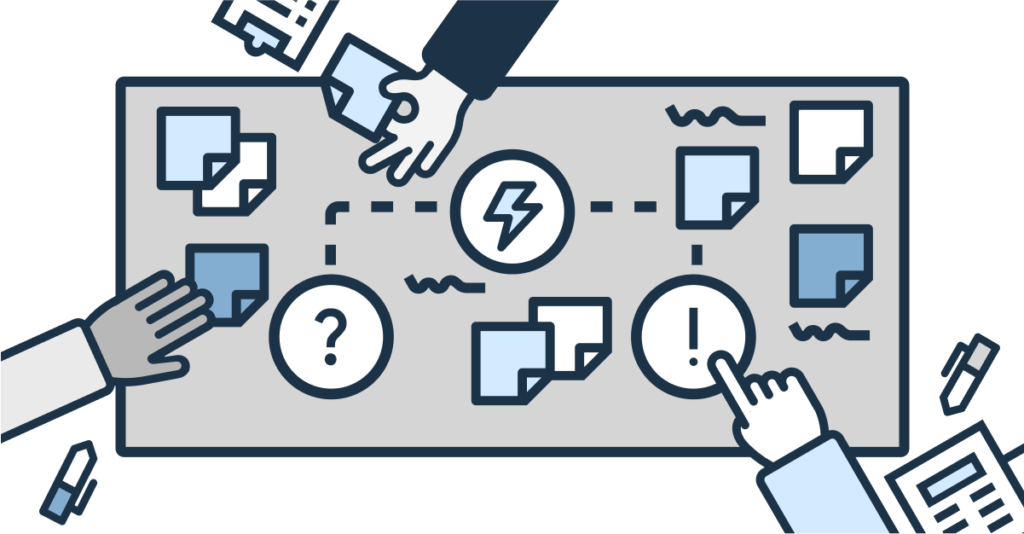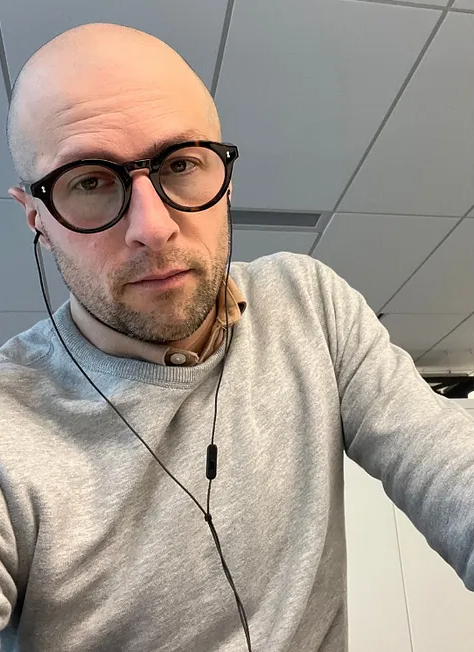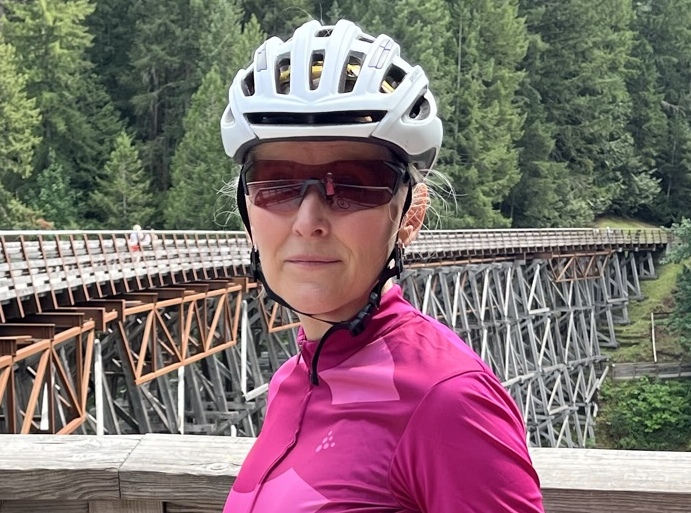Hiring service designers into program areas
|

Organizations across the BC Public Service have embraced blogging as a way to share success stories and highlight the great work happening in their ministries. The Service Transformation Branch at the Ministry of Environment and Climate Change Strategy is a great example. Their blog covers a wide range of topics like data strategy, design leadership and navigating bureaucracy.
We’re excited to highlight a recent post from the blog. Ministries in the natural resources sector can now hire designers directly into program areas, enabling new team models for the long-term work of building excellent digital service experiences. Read on for advice and reflections on bringing service designers aboard your team, from 3 people leading design at the program level in the natural resource sector: Kevin Ehman, Andrea Kolot and Brian Finn.
Why ministries and program areas should hire service designers
Andrea: Because designers have the training, skills and experience you need to create public services that work for real people.
Service design and user experience design are human-centred and collaborative practices. They work with the users of a product or service to understand where it goes wrong and how to improve it. (Or how to create new products and services.)
Too often, a service is created or modernized without input from the people who must use it. This is also true of public services, and this needs to change. And it’s especially important now that we’re delivering more services online.
If a service is only available online, we risk excluding the public if it isn’t easy to find, access and use. Providing for the real needs of the public is core to our responsibility as members of the public service.
Kevin: Also, building internal capacity supports digital service delivery and gets us away from relying solely on partnerships with the private sector.
How to hire designers
Kevin: I strongly recommend not going it alone if you’re a program or branch leader without hands-on design experience. Leverage corporate supports, especially the Digital Talent team at the Digital Office. They can help support the pathway to hiring, with as high a touch as you might need to recruit and hire the right candidate.
And, it follows — make sure you have actual design expertise on your hiring panel. This may sound obvious, but we’ve seen panels with little to no design practice experience wading through a large candidate pool, unsure how to delineate the various skills on offer. Having public sector design leadership contribute to your hiring process mitigates the risk that you match the right designer with the wrong program-level challenges.

Brian: It’s also really important to understand what you are going to be asking of the people you are hiring. It might be tempting to bring in an a mid-weight designer (IS24 level in the BC Public Service) because it’s easier to get approved, but if you put them in the deep end of a complex project and do not already have experienced people in more senior roles who understand the work and who can develop and support that person, you are likely setting them up to fail.
When to hire a designer
Andrea: Are architectural and engineering decisions made before or after a house is built? If you’re making them after, no offence, but you’re doing it wrong.
It’s the same with designing a service. Service design and user experience design needs to happen before anything’s built. (And even before talk turns to favourite colours and preferred fonts!)
Kevin: It’s imperative that leadership set the stage for design to integrate into the team, and that starts with understanding what design is and how it can help you achieve your mission. This also means laying the conditions for quality collaboration and their individual contributions.
But what does a designer actually do?
Andrea: Every project’s different, so there are no design formulas to follow. But there are some activities most designers will do on a project:
- It usually starts with desk research. Designers collect and read all they can find about a product or service. That could include everything from legislation and policy to technical documentation and articles
- It then often turns to identifying and interviewing users of a service and analyzing their feedback. This is time consuming but crucial to identifying and understanding the problem to be solved. We lose a lot when we “solve” the wrong problem
- Next can come mapping the steps, activities and interactions in a current product or service (if there is one). A current state map is a visualization of how a product or service works at present. It helps designers and other team members see where and why a service or product fails, and it may offer hints to improve it
- A current state map is often followed by one showing a possible future state. A future state map suggests a direction a product or service may take. Designers validated these maps with users and subject matter experts
- The future state map may then inform the creation of a service prototype. Service prototypes can be low fidelity or high fidelity. Either way, their purpose is to test possible solutions with users to avoid committing time and money to building the wrong service
Again, design isn’t formulaic. It takes time, effort and teamwork to develop and follow a process that works for a project. Designers must be comfortable with uncertainty (and so must the executive they work for). And they need to be confident about changing direction if evidence tells them they’re heading the wrong way.

How program areas can support designers
Kevin: Design works best in pairs. Multiple perspectives are necessary to deliver highly valuable and unbiased work. This may mean partnering someone from the policy unit in a full-time capacity, borrowing from a corporate resource like CITZ’s Government Digital Experience (GDX) team, or even hiring a second designer. Designers also need substantive feedback, review and critique from their program area and executives.
It’s important they receive some kind of leadership when it comes to practice. Just as I, a design leader, wouldn’t assume to critique draft legislation prepped by a team of expert policy wonks — we need diverse and diffuse leadership skills in our ministries to drive quality work. Lean on supports across government if there’s not a point of design expertise within your ministry: Development and Digital Services at Natural Resource Information and Digital Services (NRIDS), Public Engagement & Design at GDX (CITZ), or the Digital Talent and Capacity team at the Digital Office (CITZ).
Designers will necessarily need access to the tools to do their job, like paid licenses for tools like Mural and Figma. Have the budget, do the Privacy Impact Assessments, work with folks from corporate to ensure you have this foundation in place. Just as we wouldn’t expect an economist to work without Excel, we can’t deny designers the core tools of their practice. Have these pieces in place before they start.
“Service design is 10% design… and 90% creating the conditions for design to happen.”
Lou Downe
Supporting designers who are new to government
Kevin: Designers who are new to government may be unprepared for the complexities of our opaque, byzantine operational environment, with its bureaucratic logics and esoteric ways of working. So it’s important to think about how you will introduce them to government, from navigating day-to-day ministry business all the way up to a primer on the parliamentary processes. The more you invest in them understanding how this whole thing works, the better they’ll be able to deliver for your team and program.
Brian: Designers love to understand things. It’s essential to their work and they are usually naturally curious people. Government is a complex puzzle and in the right environment, extremely interesting to learn about.
Design is also a very collaborative process that relies a lot on communication. Encourage designers to engage with staff, interview people about their work, talk to industry and the public about where they intersect with government and what that experience is like. Experienced staff who make time for designers can unlock incredible insights by sharing their knowledge with people who are looking very broadly at the organization.

Career development for designers
Kevin: There’s a limited amount of design leadership positions in government (for now), so many senior designers will come against a hard ceiling to their career trajectory in this organization. Beyond the scope of Performance Development Platform cycles, how will you help them grow as a designer and a public service employee? Perhaps they might be interested in more generalist leadership — how will you bridge them into not-design activities to gain that exposure?
Andrea: Scientists, policy analysts, developers, lawyers etc. have public service career paths to follow. Designers need them, too — otherwise we risk losing our talent to the private sector.
Summary and overview
Here’s a quick review of what we covered:
- Designers (Service designers, UX designers and content designers) have the unique skills and experience to create public services that work better for everyone
- Natural resource ministries are now able to hire designers directly into program areas, and there are supports in place for leaders looking to hire their first designers, like the Digital Talent Cross-Ministry Hiring Program
- Hiring alone isn’t enough. Program areas need to create the conditions for design to thrive. This includes bringing designers in at the right time (before the solution is planned), helping them understand the complexities of government, and ensuring they have access to the design tools they need
- Design doesn’t happen in isolation. Designers need to be integrated into program areas so that they can understand the context and collaborate with program staff to co-create the service solution together
There’s so much to be gained by integrating design into the day-to-day of your program work. Like adding any novel skill to an organization, certain foundations must be in place to set everyone up for success. We’re moving into a new stage of government’s design and digital maturity, and like any growth, there’s bound to be some pains along the way. But despite those growing pains, everyone — service users, ministry staff and government as a whole — stands to benefit greatly from having more designers in all areas of government.
